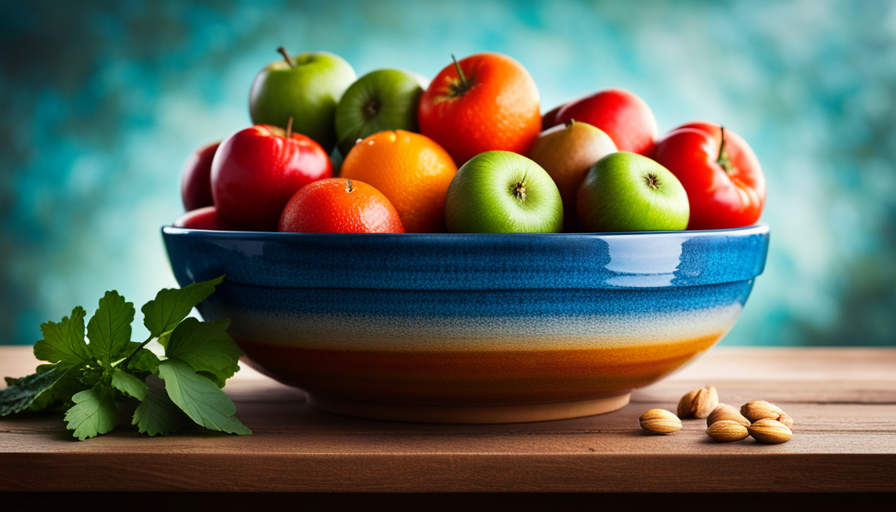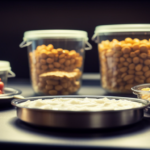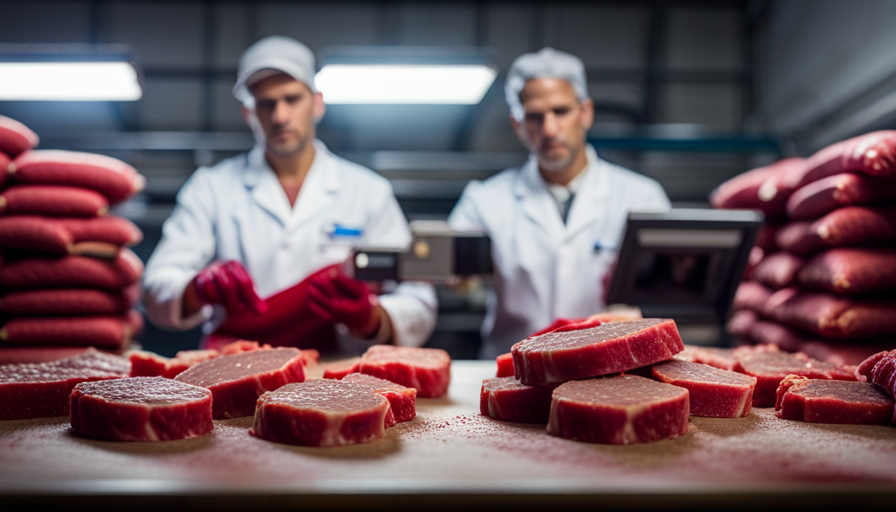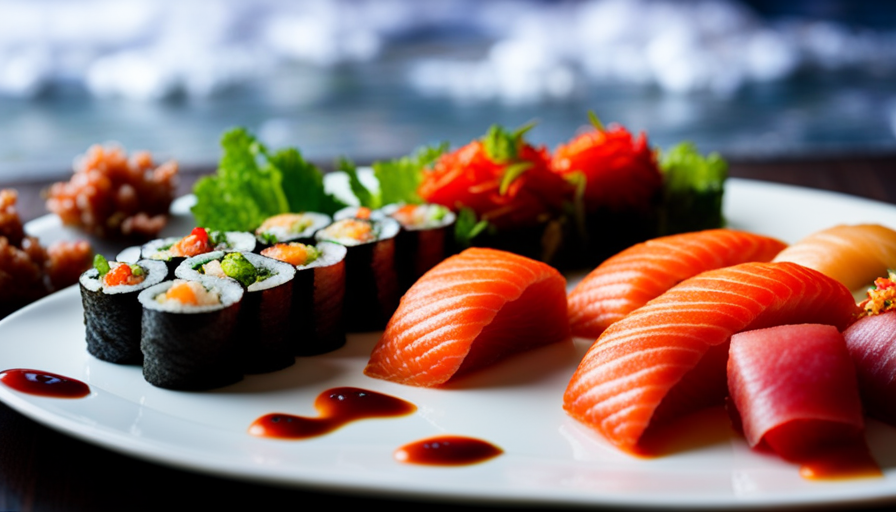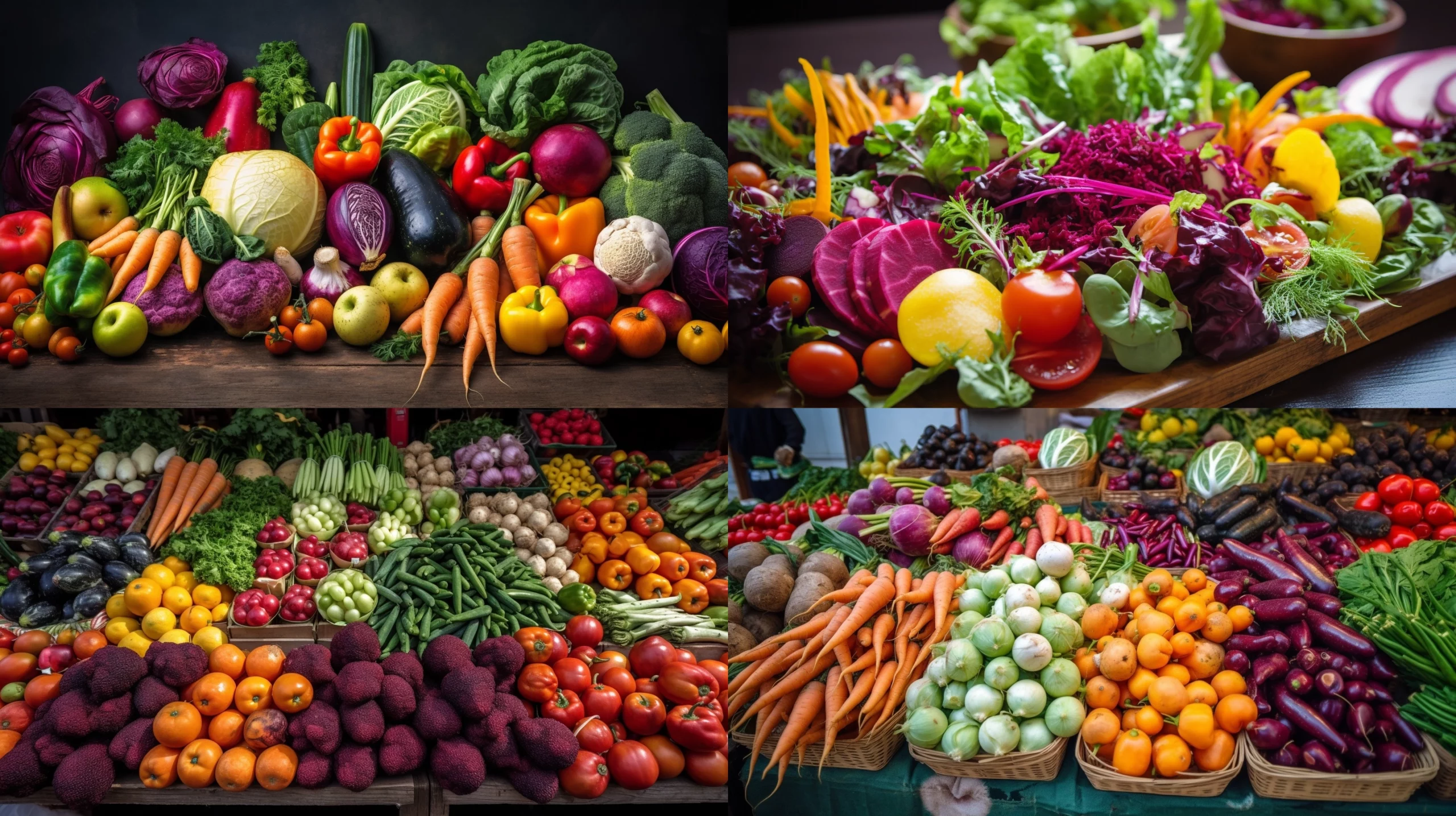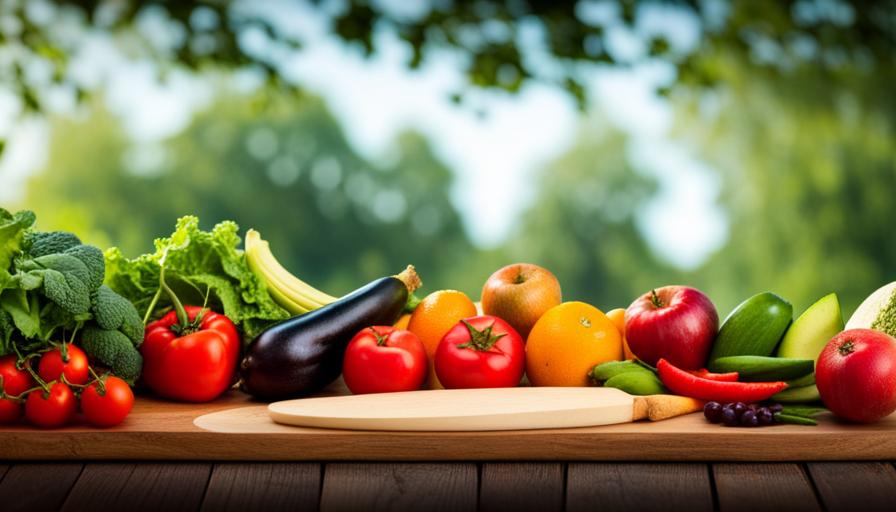So, you own a restaurant, right? You see a steady stream of patrons eager to indulge in your tasty offerings, looking forward to every mouthful. But here’s something to ponder: have you ever considered what happens in the background? I’m not referring to the hidden ingredients in your celebrated sauce. What I’m highlighting is something even more crucial – the way you handle and store your uncooked ingredients.
Proper raw food storage is crucial in any restaurant, and it’s not just about keeping things organized. It’s about ensuring the safety and quality of the ingredients that make up your culinary masterpieces.
From establishing temperature control to preventing cross-contamination, there are a lot of factors to consider.
In this article, we’re going to dive deep into the world of raw food storage. We’ll explore the importance of temperature control and the benefits of choosing the right storage containers.
We’ll also discuss the significance of organizing and labeling your raw food, as well as implementing a First In, First Out (FIFO) system.
And of course, we’ll touch on the importance of regularly inspecting and monitoring your food storage areas.
Ready to take your raw food storage game to the next level? Let’s get started!
Key Takeaways
- Investing in high-quality refrigeration equipment is crucial for maintaining proper temperature control and ensuring the freshness and safety of raw food in restaurants.
- Regularly monitoring and recording temperatures is important for identifying any issues with storage and maintaining compliance with food safety regulations.
- Choosing the right storage containers, such as plastic containers for lightweight and durability or stainless steel containers for acidic or oily ingredients, can help preserve the freshness and quality of raw food.
- Implementing proper organization techniques, such as using clear containers and labels, practicing the First In, First Out (FIFO) system, and separating different types of raw food, can help prevent cross-contamination and reduce waste and spoilage.
Importance of Proper Raw Food Storage
Properly storing raw food is essential for maintaining its quality and minimizing the risk of contamination. Ensuring the importance of proper hygiene and minimizing food waste is crucial in a restaurant setting. By following the correct storage practices, you can guarantee the safety and freshness of the raw ingredients used in your dishes.
When raw food is stored correctly, it helps to maintain its quality. This is especially important in a restaurant where freshness is key. By storing raw food at the correct temperature, you can prevent bacterial growth and preserve the taste and texture of the ingredients.
Additionally, proper storage techniques help to prevent cross-contamination, reducing the risk of foodborne illnesses.
Another significant benefit of proper raw food storage is the reduction of food waste. When ingredients are stored improperly, they can spoil quickly, leading to unnecessary waste. By implementing proper storage practices, you can extend the shelf life of your raw food, reducing the amount of food that goes to waste and saving money in the process.
The importance of proper raw food storage cannot be overstated. It ensures the preservation of quality, minimizes the risk of contamination, promotes proper hygiene, and reduces food waste. By following the correct storage techniques, you can maintain the freshness and safety of your ingredients, ultimately providing your customers with high-quality dishes.
Establishing Temperature Control
Make sure you’ve got a tight grip on keeping things nice and cool to ensure your precious ingredients stay fresh and unspoiled. Establishing proper refrigeration is crucial for maintaining the quality and safety of raw food in your restaurant.
Here are some key steps to help you maintain temperature control:
-
Invest in high-quality refrigeration equipment: Ensure that your refrigerators and freezers are in good working condition and regularly serviced. This will help maintain consistent temperatures and prevent any fluctuations that could spoil your raw food.
-
Organize your storage space: Properly organize your refrigeration units to ensure even air circulation and prevent cross-contamination. Store raw meat, poultry, and seafood on the bottom shelves to prevent any drippings from contaminating other foods.
-
Maintain temperature logs: Regularly monitor and record the temperatures of your refrigeration units. This will help you identify any potential issues and ensure that they are promptly addressed. Keeping detailed temperature logs also demonstrates your commitment to food safety and can be useful during health inspections.
By establishing proper refrigeration and maintaining temperature logs, you can ensure that your raw food stays fresh and safe for consumption. Remember, maintaining the right temperature is essential for preventing the growth of harmful bacteria and preserving the quality of your ingredients. So, take the necessary steps to keep things cool and enjoy the benefits of fresh, unspoiled raw food in your restaurant.
Choosing the Right Storage Containers
Selecting the ideal storage containers is crucial for preserving the freshness and quality of your ingredients in your establishment. When it comes to storing raw food in a restaurant, it’s essential to consider the different types of storage containers available.
The type of container you choose will depend on the specific needs of your ingredients and compliance regulations.
Firstly, consider the material of the storage container. Plastic containers are commonly used as they’re lightweight, durable, and easy to clean. However, make sure that the plastic containers are food-grade and BPA-free to maintain food safety standards. Stainless steel containers are another popular choice due to their durability and resistance to corrosion and stains. They’re ideal for storing acidic or oily ingredients.
Next, consider the size and shape of the containers. Opt for containers that are stackable to maximize storage space in your refrigerator or storage area. Additionally, choose containers with tight-fitting lids to prevent air and moisture from entering, which can lead to spoilage.
Compliance regulations must be taken into account when selecting storage containers. Ensure that the containers meet health department guidelines and are suitable for the specific type of food being stored. It’s important to regularly inspect and replace containers that show signs of wear and tear or damage.
By carefully selecting the right storage containers, you can ensure that your raw food stays fresh and of high quality, complying with food safety regulations in your restaurant.
Organizing and Labeling Raw Food
To ensure efficient organization and easy identification, you’ll want to implement a system for categorizing and labeling your fresh ingredients in your establishment. By following these organizing methods and maintaining cleanliness, you can ensure that your raw food stays fresh and safe for consumption.
-
Categorize by type: Begin by organizing your raw food items into categories such as meat, poultry, seafood, fruits, and vegetables. This will make it easier to locate specific ingredients when needed and prevent cross-contamination.
-
Use clear containers: Invest in clear, airtight containers for storing your raw food. This allows you to easily see what is inside without having to open each container, saving time and reducing the risk of contamination.
-
Label everything: Label each container with the name of the ingredient, date of purchase, and expiration date. This will help you keep track of the freshness of your ingredients and prevent any spoilage or waste.
Maintaining cleanliness is crucial when organizing and storing raw food. Regularly clean and sanitize your storage areas to prevent the buildup of bacteria and odors. Additionally, ensure that your staff follows proper hygiene practices when handling and storing raw food.
By implementing these organizing methods and maintaining cleanliness, you can ensure that your raw food stays fresh and ready for use in your restaurant.
Implementing a First In, First Out (FIFO) System
Ensure that you prioritize freshness and minimize waste by implementing a First In, First Out (FIFO) system for your ingredients, so you never have to worry about serving anything less than the best to your valued customers.
Implementing a FIFO system in your restaurant has numerous benefits and is considered one of the best practices for storing raw food.
Firstly, a FIFO system ensures that the oldest ingredients are used first, reducing the risk of spoilage and food waste. By rotating your stock and using the older ingredients before the newer ones, you can maintain the highest quality of your dishes. This system also helps to prevent any potential health risks that may arise from using expired or spoiled ingredients.
To implement a successful FIFO system, start by organizing your storage areas. Clearly label your ingredients with their purchase dates and use-by dates. Place the newest items at the back of the storage shelves or refrigerators, and bring the older items forward. Regularly check your inventory and discard any expired or spoiled ingredients.
Additionally, train your staff on the importance of the FIFO system and the proper procedures to follow. Emphasize the need for accuracy and attention to detail when handling ingredients. Regularly monitor and evaluate the effectiveness of your FIFO system to ensure that it is being followed consistently.
By implementing a First In, First Out system, you can maintain the freshness of your ingredients and minimize waste. This will not only enhance the quality of your dishes but also improve your restaurant’s efficiency and profitability.
Separating Different Types of Raw Food
By implementing a First In, First Out (FIFO) system, you can tantalize your customers’ taste buds by separating the various types of fresh ingredients, creating a symphony of flavors in each delectable dish.
One crucial aspect of this system is separating meat products to ensure food safety and prevent cross-contamination. When storing raw meat, it’s essential to keep it separate from other food items, particularly seafood. This separation is necessary because seafood is highly susceptible to bacterial growth and can easily contaminate other ingredients.
To achieve this, designate specific areas or shelves in your storage facility for different types of raw meat and seafood. Use separate containers or wraps for each type and clearly label them to avoid confusion.
Additionally, it’s crucial to store seafood properly to maintain its quality and freshness. Keep seafood refrigerated at temperatures between 32°F and 38°F to slow down bacterial growth and preserve its texture and flavor. Regularly check and discard any spoiled or expired seafood to ensure that only the freshest ingredients are used in your dishes.
By following these guidelines and implementing proper separation techniques, you can create a safe and flavorful culinary experience for your customers.
Preventing Cross-Contamination
Preventing cross-contamination is crucial in maintaining the highest standards of food safety and ensuring a delightful dining experience for your customers. Proper storage techniques play a vital role in achieving this goal.
To prevent cross-contamination, it is important to store different types of raw food separately. Firstly, raw meats should be stored in leak-proof containers on the bottom shelf of the refrigerator. This prevents their juices from dripping onto other foods and reduces the risk of bacterial growth. It’s also recommended to keep raw meats away from ready-to-eat foods to avoid potential contamination.
Secondly, fruits and vegetables should be stored separately from raw meats to prevent the transfer of pathogens. Use different cutting boards and utensils for handling raw meats and produce to avoid cross-contamination. Additionally, make sure to wash your hands thoroughly after handling raw meats before touching other food items.
Furthermore, proper labeling and organization of storage areas can also help prevent cross-contamination. Clearly mark containers and shelves for specific types of raw food to minimize confusion and ensure proper storage practices.
By following these preventive measures and implementing proper storage techniques, you can significantly reduce the risk of cross-contamination in your restaurant. This not only ensures the safety of your customers but also upholds the highest standards of food hygiene.
Regularly Inspecting and Monitoring Food Storage Areas
Regularly inspecting and monitoring your storage areas is essential for maintaining the highest standards of food safety and ensuring a delightful dining experience for your customers. By implementing proper inspecting procedures and monitoring techniques, you can prevent any potential issues that could compromise the quality and safety of your raw food.
To effectively inspect your storage areas, develop a checklist that covers all the important aspects of food storage. This checklist should include items such as checking for any signs of pest infestation, ensuring proper temperature control, examining the condition of containers and packaging, and confirming that all food items are properly labeled and dated.
In addition to regular inspections, it is crucial to establish monitoring techniques to ensure the ongoing safety of your stored raw food. This can include using temperature monitoring devices to constantly monitor the temperature of refrigerators and freezers, regularly checking inventory levels to prevent overstocking or expired items, and implementing a system for documenting and addressing any issues that may arise during inspections.
By consistently following these inspecting procedures and monitoring techniques, you can maintain a clean and well-organized storage area, minimize the risk of cross-contamination, and ensure that your raw food remains safe and of the highest quality.
Training Staff on Raw Food Storage Procedures
Ensuring your team is well-trained on proper procedures for storing fresh ingredients is essential for maintaining a safe and high-quality dining experience. Staff training is crucial when it comes to handling and storing raw food in your restaurant.
By providing comprehensive training, you can prevent cross-contamination, minimize food spoilage, and ensure the freshness of your ingredients.
Start by educating your staff on the importance of following raw food procedures. Emphasize the significance of proper storage techniques, such as keeping raw meats separate from other food items to avoid cross-contamination. Train them on the correct temperatures for storing different types of raw food, as this plays a vital role in maintaining food safety.
Next, teach your staff about the proper packaging and labeling of raw food. This includes using airtight containers or wrapping materials to prevent bacterial growth and maintaining clear labels with dates to ensure proper rotation of ingredients. Additionally, instruct them on how to handle raw food with clean hands and sanitized utensils to avoid any potential contamination.
Regularly reinforce these training procedures to ensure your staff remains up to date and vigilant in their raw food storage practices. Conduct periodic refresher courses and provide written materials as a reference. By investing in staff training and ensuring they understand and follow proper raw food procedures, you can maintain the safety and quality of your restaurant’s food storage.
Ensuring Compliance with Food Safety Regulations
To make sure you comply with food safety regulations, it’s crucial to stay updated on the latest guidelines and implement them meticulously, as the consequences of non-compliance can be as catastrophic as a restaurant shutting down.
When it comes to raw food storage, there are specific regulations you need to follow to ensure the safety of your customers and the quality of your food.
First and foremost, it’s important to store raw food at the correct temperatures. This helps prevent the growth of harmful bacteria that can cause foodborne illnesses. Make sure to keep raw meats and seafood stored at temperatures below 41°F (5°C) to slow down bacterial growth. Additionally, keep raw fruits and vegetables at temperatures below 50°F (10°C) to maintain their freshness.
Another key aspect of complying with food safety regulations is proper segregation. Raw food should always be stored separately from ready-to-eat food to minimize the risk of cross-contamination. Use separate containers, shelves, or refrigerators to store raw food to prevent any bacteria from spreading to other foods.
Regular monitoring and documentation are also essential. Keep records of temperature checks and inspections to demonstrate your compliance with regulations. This will be helpful during health inspections and audits.
By following these food safety regulations for raw food storage, you can ensure the safety and quality of your food, protect your customers from foodborne illnesses, and avoid the devastating consequences of non-compliance.
Frequently Asked Questions
What are the specific temperature requirements for storing different types of raw food?
To ensure proper organization and labeling, it’s crucial to understand the specific temperature requirements for storing different types of raw food.
Meats, poultry, and seafood should be stored at temperatures below 40°F (4°C) to prevent bacterial growth.
Dairy products and eggs should be stored at temperatures between 32°F (0°C) and 40°F (4°C) to maintain freshness.
Fruits and vegetables can be stored at temperatures between 32°F (0°C) and 50°F (10°C) to extend their shelf life.
Remember to regularly monitor and adjust temperatures to ensure food safety.
How frequently should raw food storage areas be inspected for potential issues?
Inspecting raw food storage areas for potential issues is crucial for maintaining food safety in your restaurant. The frequency of inspection depends on the type of food being stored and the specific requirements of your establishment. However, it’s generally recommended to conduct inspections at least once a day.
Regular inspections ensure that any potential issues, such as temperature fluctuations or signs of spoilage, are identified and addressed promptly. By prioritizing the importance of maintenance, you can prevent contamination and ensure the freshness and quality of your raw food.
Can different types of raw food be stored in the same container?
Different types of raw food should not be stored in the same container due to the risk of cross-contamination. This practice isn’t recommended as it can lead to the spread of bacteria and other harmful pathogens.
To ensure the safety of your raw food storage, it’s best to store different types of raw food separately in designated containers. This will help minimize the risk of contamination and maintain the highest standards of food safety.
What are the consequences of not properly organizing and labeling raw food in storage?
Not properly organizing and labeling raw food in storage can have serious consequences for food safety. Without clear organization and labeling, there’s a higher risk of cross contamination. This occurs when bacteria or pathogens from one type of raw food contaminate others, leading to foodborne illnesses and potential health hazards for customers. Proper organization and labeling are essential to ensure that raw food is stored correctly and safely, preventing any potential risks.
How often should staff receive training on raw food storage procedures?
To ensure proper raw food storage, staff education and training frequency are crucial. It’s important to regularly train your staff on the correct procedures for storing raw food. By conducting frequent training sessions, you can reinforce the importance of proper storage techniques. These techniques include temperature control, separating different types of raw food, and labeling. This will help minimize the risk of cross-contamination and ensure the safety and quality of the food in your restaurant.
Can the Same Food Storage Methods for Home Use Apply to Storing Raw Food in a Restaurant?
Yes, the same food storage methods for home use can apply to storing raw food properly in a restaurant. Both settings require proper refrigeration, airtight containers, and labeling to ensure food safety. Following guidelines for temperature control and hygiene is essential for both home and professional kitchens.
Conclusion
In conclusion, proper raw food storage is crucial to maintain the quality and safety of food in a restaurant. By establishing temperature control and choosing the right storage containers, you can ensure that your restaurant serves safe and delicious food. Organizing and labeling raw food, implementing a FIFO system, and preventing cross-contamination are also important steps. Additionally, regularly inspecting and monitoring food storage areas, training staff, and ensuring compliance with food safety regulations are essential. So, why take any chances with improper storage when you can follow these guidelines and keep your customers coming back for more?


